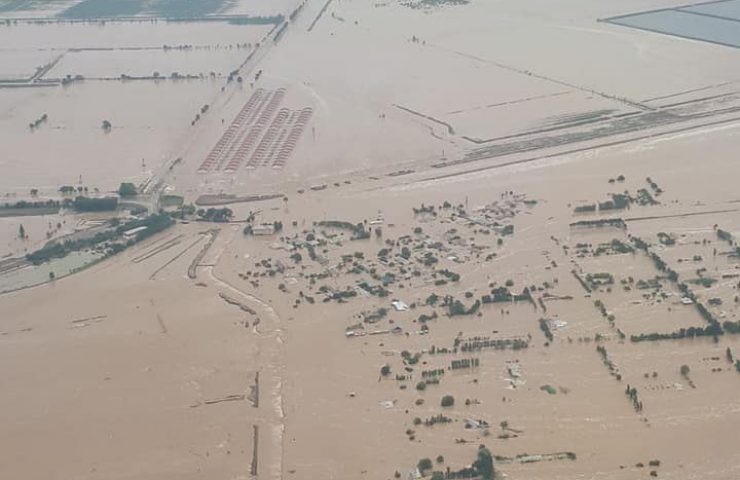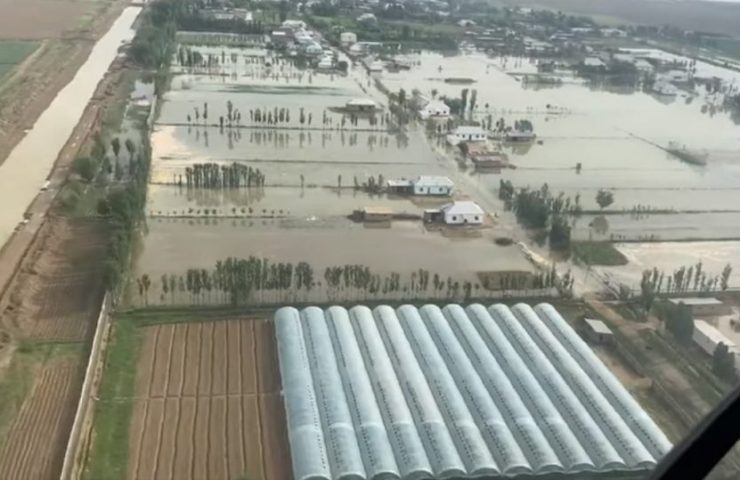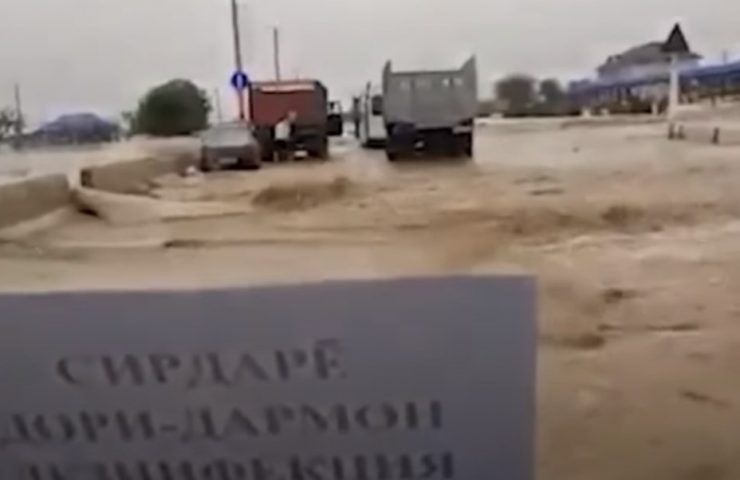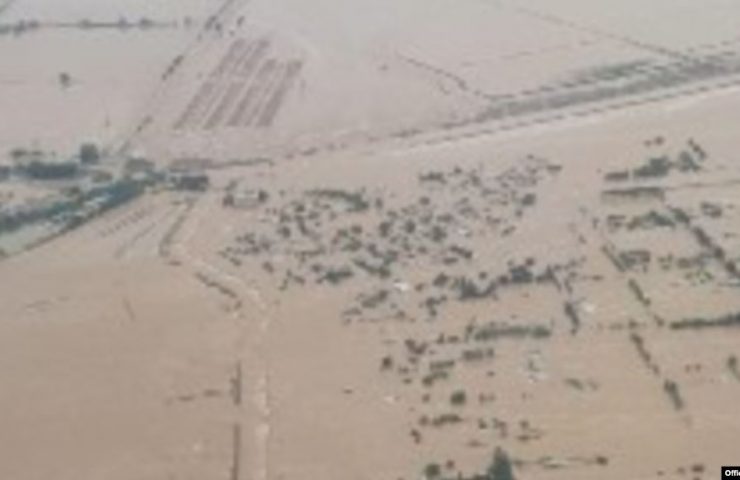The Prosecutor General’s Office of Uzbekistan opened a criminal case regarding the Sardoba dam collapse.
Follow us on LinkedIn
The authorities assure citizens of both Uzbekistan and neighboring Kazakhstan that extreme weather caused the collapse. However, some experts say that technical errors made during the dam construction led to the tragedy. They also claim that relatives of high-ranking officials were involved in the dam construction.
The Sardoba reservoir was commissioned in 2017. It is located in Sirdaryo region, 140 kilometers away from Tashkent and several dozens of kilometers away from the Turkistan region of Kazakhstan.
The reservoir holds 922 million cubic meters of water for irrigation. The ex-Prime Minister and current president Shavkat Mirziyoyev supervised the construction of one of the largest hydraulic facilities in the country, which began in 2010 under Islam Karimov.
After the dam collapse and flood, the Ministry of Emergency Situations and the National Guard evacuated about 70 thousand residents of flooded villages. Four people died, including two National Guard’s officers, the first ones who came to rescue. 56 people were injured.
Five villages are flooded in Kazakhstan; more than 31 thousand residents were evacuated. Some of them are outraged at the local authorities for the late informing about the disaster, and demand to present an invoice to the Uzbek authorities for the damage.
Humanitarian Emergency
The tragedy on Syr Darya caused deep compassion and support in society. Dozens of convoys with humanitarian aid from Tashkent residents were sent to the flooded region. In just a couple of days, all the victims were provided with warm clothes and food for several weeks. There were so many people wanting to help that the emergency response team had to stop raising funds.
On the very first day, the local residents hosted the evacuated from the flood areas people. Part of the evacuated residents were sent to neighboring Jizzakh region. They were temporarily placed in empty schools and kindergartens closed for quarantine. Local hokimiyat provided hot meals. According to the Ministry of Emergency Situations, the water arrived so quickly that some families had to be evacuated from the roofs of their houses by helicopter.
Now, the National Guard is protecting the flooded houses from marauders and their owners, striving to return to their land, reports Gazeta.uz.
The water gradually leaves the flooded zone, and people have already begun to return to their homes. At the meeting with the flood-affected residents, President Shavkat Mirziyoyev assured, “Everyone will be provided with financial and moral support, and no one will be left without attention and care”.
There are no reports on specific support measures. Earlier, Mirziyoyev visited Bukhara region, where a storm damaged hundreds of houses, and promised residents to compensate the damage. He also instructed to support farmers whose households were affected by the dam collapse.
Conflict of Interests
The first news reports by state news agencies and the state-controlled media referred to the dam collapse as a “leakage of water”, and the Ministry of Water Resources blamed abnormally strong winds and heavy rains at the end of April for the accident.
However, the Centre of Hydrometeorological Service did not report any abnormal winds or rains on the eve of the dam collapse.
Soon, a government commission for investigation of the dam collapse was organized. President Shavkat Mirziyoyev arrived in the flood-affected region along with Prosecutor General Negmatullo Yuldashev and First Deputy Prime Minister Achilboy Ramatov. A case was opened regarding anthropogenic emergency, negligence of official duties and violation of the safety instructions for construction work.
There is no information on the contractor and subcontractor of the facility. There are also no official statements in this regard. However, social networks’ users claim that To’palang Hydro Qurilish LLC owned by Islom Abdurakhmanov, the son of Senator and Head of Uzbekhydroenergo Abdugani Sanginov, was constructing the hydropower station on the reservoir.
The journalist Ali Kakhhorov claims that Islom Abdurakhmanov has been winning tenders for the construction of hydraulic facilities in the country for the third year in a row. Allegedly, this started a year after Sanginov was appointed as Head of Uzbekhydroenergo.
According to Kakhhorov, on April 21, 2017, the To’palang Hydro Qurilish holding began construction of a hydropower station on the Sardoba reservoir.
“God send me such successful and smart sons as well,” Kakhhorov wrote on his Facebook page.
Other social networks’ users claim that the construction of the reservoir itself was supervised by a subsidiary of the state-owned company O’zbekiston temir yo’llari, which was controlled by Deputy Prime Minister Achilboy Ramatov.
No One to Blame?
According to the RFE/RL Radio Ozodlik, multi-million corruption was taking place during the construction of the facility. Sources assure that during the dam construction “the kickback schemes were used”, and only a part of the budgeted materials was delivered to the construction site. Allegedly, according to the same scheme, another reservoir is being constructed – Chimkurgan reservoir.
The sources doubt that any of the high-ranking officials responsible for the Sardoba reservoir construction will be punished. The situation of the tragedy during the construction of the Yunusabad metro line in Tashkent, when six construction workers were buried under the rubble, will surely repeat. Then, the rain was also blamed. Achilboy Ramatov, the member of the current president’s administration, was also responsible for the construction then. However, the accident in the metro had no consequences for him.
Scientists Warned About the Dams’ Problems
World Bank experts conducted an analysis of the probability of the accidents at dams. 20 dams are at risk, including the largest Charvak reservoir, supplying Tashkent.
According to environmental expert Natalya Shulepina, the International Fund for Saving the Aral Sea diagnosed two dams in each of the five Central Asian republics back in 1999 and made recommendations for the maintenance of hydraulic facilities. Since then, there were no large-scale researches, and no one knows about the safety of old and new dams, the expert believes.
“It is obvious that over the past years, the number of dams and reservoirs has increased in the country. In addition, there are plans to build about sixty new ones. Now, the reputation of the Ministry of Water Resources is very bad, and it is more important. It definitely does not have the veto power to fill the reservoir, which was not commissioned,” Shulepina wrote.
Shulepina advised to create a single database of hydraulic facilities.
“The technical passports for each object are needed, the methodology of conservation and liquidation. We need to solve problems, not to hide them,” she writes.
The deputy of the Oliy Majlis (Supreme Assembly – Tr.) Doniyor Ganiev unexpectedly made a statement in this regard. Ganiev said that he has repeatedly witnessed corruption in the construction industry. He told that with this approach, Uzbekistan could not even think of building a nuclear power plant. The Anhor news agency notes that the deputy’s publications were deleted later from the social networks and the Aniq.uz website.
This article was prepared as part of the Giving Voice, Driving Change – from the Borderland to the Steppes Project.








